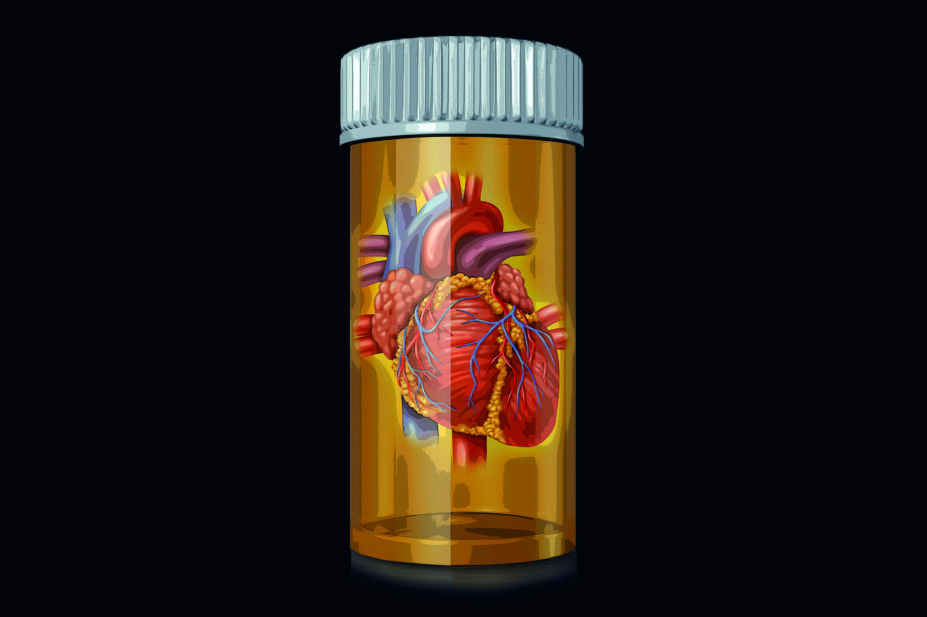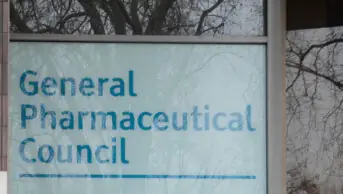
Shutterstock.com
In the past few years, there have been a number of reports in the mainstream media extolling the virtues of statin therapy and recommending that more people should be taking it[1]
,[2]
,[3]
,[4]
. In November 2016, a commentary piece about an article published in The Lancet
[5]
concluded that treating healthy people with increased risk of heart attack or stroke will prevent one major vascular event for every 20 people treated for five years. This piece led to even more interest by the media regarding the use of statins, with headlines published such as: ‘Take statins even if you are healthy, say experts’[6]
.
Also in November 2016, the government-funded United States Preventive Screening Task Force (USPSTF) issued guidelines stating that there is “moderate” evidence that statins benefit healthy people aged between 40 and 75 years, with ≥10-year cardiovascular disease (CVD) event risk and at least one CVD risk factor (including dyslipidaemia, defined as low-density lipoprotein [LDL] cholesterol >130mg/dL or high-density lipoprotein [HDL] cholesterol <40mg/dL, diabetes, hypertension or smoking). These recommendations are similar to — but slightly more restrictive than — UK guidelines, which do not require the presence of a risk factor or limit age to 75 years. The guidelines were issued by the UK’s National Institute for Health and Care Excellence (NICE) in 2014, calling for statin therapy for healthy people with ≥10% ten-year risk of developing CVD, after attempts at lifestyle modification.
However, guidelines issued by the American College of Cardiology (ACC) and the American Heart Association (AHA) in 2013 have a lower threshold, recommending statin therapy for people with ≥7.5% ten-year risk of CVD. The guidelines deem treatment as optional for people with 10-year risk between 5.0% and 7.5%[7]
.
Based on these recommendations, healthcare professionals are being instructed to advise millions more healthy people to take cholesterol-lowering statin therapy — 4.5 million more in the UK alone[8]
. But a closer look at the evidence behind these guidelines suggests that a more nuanced approach is warranted.
United States Preventive Screening Task Force systematic review
The USPSTF’s systematic review includes randomised controlled trials comparing statin therapy with placebo in “adults 40 years and older without prior CVD events”, the results of which were published in JAMA in June 2016[9]
. A total of 19 studies met these criteria, including a total of more than 70,000 participants enrolled for a median of four years.
The results of the review conclude: “In adults at increased CVD risk but without prior CVD events, statin therapy was associated with reduced risk of all-cause and cardiovascular mortality and CVD events, with greater absolute benefits in patients at greater baseline risk.” In addition, there was no evidence that statin therapy increased the risk of serious adverse events (relative risk [RR] 0.99, 95% confidence interval [CI], 0.94 to 1.04).
An examination of the evidence on which this conclusion is based leads to several critically important caveats.
Incomplete reporting
As reported by Redberg and Katz in an editorial accompanying the systematic review, reporting of essential outcome measures in the published articles is incomplete. Of the 19 published articles, “15 reported all-cause mortality, 10 reported cardiovascular mortality, 12 reported fatal and non-fatal myocardial infarction, and 13 reported fatal and non-fatal stroke[10]
”, they said. Furthermore, only 7 of the 19 studies reported the incidence of serious adverse events[9]
. Such obvious omissions in the publication of these trials, which were primarily manufacturer-funded, suggest the possibility of reporting bias in favour of statins.
Lack of transparency
The evidential standard of ‘evidence-based’ medicine relies on reports of well designed and well conducted clinical trials published in peer-reviewed journals, and the systematic reviews based on those publications. This standard ignores the inability of peer reviewers and medical journal editors to verify the accuracy of the clinical trial reports they publish because they do not have access to the underlying clinical trial data, which are kept as confidential corporate property.
As is typically the case for the most influential articles reporting the results of clinical trials[11]
, the statin trials included in the USPSTF systematic review were predominantly commercially funded. Also, commercially sponsored studies are significantly more likely to report favourable efficacy and harm results than those which are not commercially sponsored for the trials of exactly the same drugs[12]
. And, when compared with the underlying data, these peer-reviewed reports are found to include only about one-quarter of the pre-specified benefits and harm results[13]
.
Relying on the published reports of commercially sponsored clinical trials leaves healthcare professionals in a position analogous to the slaves in Plato’s allegory of the cave: conflating perception of the shadows cast on the cave wall with reality.
Simply put, the USPSTF recommendations, as well as those from NICE, the ACC and the AHA, are based not on independent analysis of the actual scientific evidence, but on unverifiable hearsay evidence, which would not be admissible in a court of law, yet is being relied on to dictate the treatment of millions of healthy people. Given the lack of access to the underlying data from the 19 clinical trials, the most reasonable assumption is that reported benefits and harms of statins for healthy people represent the upper limits of statin efficacy and safety.
Effect of statins on all-cause mortality
The USPSTF recommendations address “the benefits and harms of statin use in reducing CVD events and mortality in adults without a history of CVD[14]
”. The reviewers report that statin therapy significantly reduced all-cause mortality (pooled risk ratio [RR], 0.86 [95% CI, 0.80–0.93]). However, this finding does not represent the true effect of statins for primary prevention.
The USPSTF evidence statement, published in JAMA, states: “Studies were limited to those in which fewer than 10% of the participants had prior CVD events to include only trials that predominantly enrolled the population of interest.”[9]
But sensitivity analysis did not remove the findings of the West of Scotland Coronary Prevention Study trial, in which 8% of the participants had a history of angina or intermittent claudication, the results of which accounted for 15% of the weighted findings in the overall meta-analysis[10]
.
As reported by Ray et al. in June 2010, a meta-analysis published in JAMA Internal Medicine was carried out specifically to determine the effect of statin therapy on all-cause mortality in high-risk primary prevention patients. Data from 11 studies with 65,000 participants were included, specifically excluding all patients with pre-existing CVD. The results showed that statins did not significantly reduce the risk of all-cause mortality in high-risk primary prevention (RR 0.91, 95% CI 0.83–1.01)[15]
. Data from the nine trials that were not limited to people with diabetes (for whom statins are already recommended), showed that the absolute reduction in mortality associated with statin therapy was 0.27%, which translates into 367 healthy people needing to be treated with the statin for 3.7 years to prevent one death[15]
.
Non-fatal heart attack and stroke
Given the non-significant reduction in all-cause mortality and the failure to reduce the overall incidence of serious illness, there needs to be assessment of the effect of statins on non-fatal heart attack and stroke to determine how healthy people will benefit from statin therapy. Seven of the studies included in the USPSTF systematic review reported the reduction in non-fatal myocardial infarction (absolute risk difference –0.46% [95% CI –0.90% to –0.02%]). Moreover, 3 of the 19 trials included in the review reported the reduction in non-fatal stroke associated with statin therapy (absolute risk difference –0.32% [95% CI –0.52% to –0.12%])[9]
. A combination of these data show that statins for healthy people reduce the absolute risk of suffering the non-fatal heart attack or stroke by 0.78% over 3.7 years. In other words, studies included in the USPSTF systematic review show that 128 healthy people need to be treated with statins for 3.7 years to prevent one non-fatal heart attack or stroke, but not decrease the burden of serious illness overall.
Not always black or white
Rather than issuing a ‘yes/no’ dictum on statin recommendations for people without CVD, healthcare professionals would serve the public far better by explaining what chance they have of benefitting from taking a statin. Combining the absolute reduction in non-fatal heart attack and stroke (–0.46% and –0.32%, respectively) with the reduction in all-cause mortality reported in the meta-analysis by Ray et al.
[11]
(–0.27%, even though the reduction was not statistically significant, so a more formal statistical analysis would not include reduced mortality as a statin benefit), the total absolute reduction of “hard” cardiovascular events associated with statin therapy for primary prevention is 1.05% over approximately 3.7 years.
Potential primary prevention statin-takers should be informed that the number needed to treat (NNT) for reduction of hard cardiovascular events with statin therapy is 95, meaning that one out of 95 primary prevention patients treated with a statin for 3.7 years would benefit, while the other 94 would not derive a reduction in death and non-fatal heart attack and stroke.
One of the downsides to statin therapy for healthy people is the risk of muscle symptoms, which were reported by 4.8% more relatively young and healthy people treated with a statin compared with placebo for six months in the Effect of Statins on Skeletal Muscle Function and Performance (STOMP) trial[16]
, (number needed to harm=21)[17]
, to as high as 20% of people treated with statins in uncontrolled observational studies[18]
; greater calorie and fat intake in people treated with statins compared with those not taking statins[19]
; increase in the risk of diabetes[20]
; and significant attenuation of improvement in cardiorespiratory fitness in response to exercise training associated with statin therapy[21]
.
Given the limitations of the evidence regarding the benefits and harms of statin therapy (including ongoing lack of transparency of clinical trial data), requiring healthcare professionals to issue ‘yes’ or ‘no’ recommendations for statin therapy in healthy people does a disservice to both professionals and the public. Healthcare professionals can best serve their patients and clients by sharing the best available evidence, explaining the evidence that is not available, and then engaging in a process of shared decision-making that leads to each person being empowered to make the appropriate decision based on his or her own assessment of the data and personal values.
The real question is not whether healthy people should take a statin, but how health professionals can best help healthy people to minimise their risk of CVD and maximise their chance of remaining healthy. Observational studies show that maintaining a healthy lifestyle — not smoking, eating a healthy diet, exercising 30 minutes on most days, and consuming alcohol in moderation — reduces the risk of CVD about three times more than taking a statin, and has many other health benefits as well[22]
.
An article published in the New England Journal of Medicine in December 2016[23]
, which relied on sophisticated testing of DNA sequence polymorphisms to identify people at increased risk of coronary artery disease, brings us back to what our grandparents (or great-grandparents) used to know — despite increased genetic risk, living a healthy lifestyle (defined as at least three out of four of: not smoking, not being obese, engaging in regular exercise, and eating a healthy diet) cuts the risk of heart disease almost in half. In absolute terms, healthy lifestyle reduced the absolute risk of high genetic risk people in the ‘Atherosclerosis Risk in Communities’ study by 5.6% over 10 years, NNT=18 (more than twice the absolute reduction in harm compared to statins in a similar risk population). In our pharmaceutically oriented society, we must not forget that lifestyle factors are far more important than medical care in protecting our health[24]
.
John Abramson is lecturer in healthcare policy at Harvard Medical School, Boston, Massachusetts
Declaration of interest: Dr Abramson serves as a consultant to plaintiffs’ attorneys in pharmaceutical litigation, including cases involving statins.
References
[1] Payne J. Statins are here to stay and we should embrace them. The Huffington Post, 23 September 2016. Available at: http://www.huffingtonpost.co.uk/jules-payne/statins-are-here-to-stay-_b_12138162.html (accessed March 2017)
[2] Pollack A. Two studies back guidelines for wider use of statins. The New York Times, 13 July 2015. Available at: https://www.nytimes.com/2015/07/15/health/broader-statin-use-gets-support-from-2-new-studies.html?_r=0 (accessed March 2017)
[3] Cha AE. New statin guidelines; everyone 40 and older should be considered for the drug therapy. The Washington Post, 13 November 2016. Available at: https://www.washingtonpost.com/news/to-your-health/wp/2016/11/13/new-statin-guidelines-everyone-age-40-should-be-considered-for-the-drug-therapy/?utm_term=.0ae6f036a46e (accessed March 2017)
[4] Matthews S. Why statins do work: cholesterol-lowering drugs cut the risk of a heart attack by 36% and experts say they have no harmful side effects. Mail Online, 15 November 2016. Available at: http://www.dailymail.co.uk/health/article-3937988/Why-statins-work-Cholesterol-lowering-drugs-cut-risk-heart-attack-36.html (accessed March 2017)
[5] Collins C, Reith C, Emberson J et al. Interpretation of the evidence for the efficacy and safety of statin therapy. The Lancet 2016;388:2532–2561. doi: 10.1016/S0140-6736(16)31357-5
[6] Bodkin H. Take statins even if you are healthy, say experts. The Telegraph, 18 January 2017. Available at: http://www.telegraph.co.uk/news/2017/01/18/take-statins-even-healthy-say-experts/ (accessed March 2017)
[7] Stone NJ, Robinson JG, Lichtenstein AH et al. 2013 ACC/AHA guideline on the treatment of blood cholesterol to reduce atherosclerotic cardiovascular risk in adults: a report of the American College of Cardiology/American Heart Association Task Force on Practice Guidelines. Circulation 2014;129(suppl 2):S1–S45. doi: 10.1161/01.cir.0000437738.63853.7a
[8] National Institute for Health and Care Excellence. NICE recommends wider use of statins for prevention of CVD. Available at: https://www.nice.org.uk/news/article/nice-recommends-wider-use-of-statins-for-prevention-of-cvd (accessed March 2017)
[9] Chou R, Dana T, Blazina I et al. Statins for prevention of cardiovascular disease in adults. Evidence report and systematic review for the US Preventive Services Task Force. JAMA 2016;316(19):2008–2024. doi: 10.1001/jama.2015.15629
[10] Redberg RF & Katz MH. The debate is intense, but the data are weak.JAMA 2016;316:1979–81. doi: 10.1001/jama.2016.15085
[11] Patsopoulos NA, Ioannidis JPA & Analatos AA. Origin and funding of the most frequently cited papers in medicine: database analysis. BMJ 2006;332;1061–1064. doi: 10.1136/bmj.38768.420139.80
[12] Lundh A, Sismondo S, Lexchin J et al. Industry sponsorship and research outcome. Cochrane Database of Systematic Reviews 2012;12:MR000033. doi: 10.1002/14651858.MR000033.pub2
[13] Wieseler B, Wolfram N, McGauran N et al. Completeness of reporting of patient-relevant clinical trial outcomes: comparison of unpublished clinical study reports with publicly available data. PLoS Med 2013;10(10):e1001526. doi: 10.1371/journal.pmed.1001526
[14] US Preventive Services Task Force. Statin use for the primary prevention of cardiovascular disease in adults US Preventive Services Task Force Recommendation Statement. JAMA 2016;316:1997-2007. doi: 10.1001/jama.2016.15450
[15] Ray KK, Seshasai SRKS, Erqou S et al. Statins and all-cause mortality in high-risk primary prevention.Arch Intern Med 2010;170:1024–1031. doi: 10.1001/archinternmed.2010.182
[16] Parker BA, Capizzi JA. Effect of statins on skeletal muscle function. 2013;127(1):96–103. doi: 10.1161/CIRCULATIONAHA.112.136101
[17] Calculated with: Open Source Epidemiologic Statistics for Public Health. Available at: http://openepi.com/Menu/OE_Menu.htm (accessed March 2017).
[18] Fernandez G, Spatz ES, Jablecki C et al. Statin myopathy: a common dilemma not reflected in clinical trials. Cleve Clin J Med 2011;78:393–403. doi: 10.3949/ccjm.78a.10073
[19] Sugiyama T, Trugawa Y, Tseng C-H et al. Different time trends of caloric and fat intake between statin users and nonusers among US adults: gluttony in the time of statins? JAMA Intern Med 2014;174:1038–1045. doi: 10.1001/jamainternmed.2014.1927
[20] Sattar N, Preiss D, Murray HM et al. Statins and risk of incident diabetes: a collaborative meta-analysis of randomised statin trials.Lancet 2010;375:735–42. doi: 10.1016/S0140-6736(09)61965-6
[21] Mikus CR, Boyle LJ, Borengasser SJ et al. Simvastatin impairs exercise training adaptations. J Am Coll Cardiol 2013;62:709–14. doi: 10.1016/j.jacc.2013.02.074
[22] Yu E, Rimm E, Qi L et al. Diet, lifestyle, biomarkers, genetic factors, and risk of cardiovascular disease in the nurses’ health studies. Am J Public Health 2016;106:1616–23. doi: 10.2105/AJPH.2016.303316
[23] Khera AV, Emdin CA, Drake I et al. Genetic risk, adherence to a healthy lifestyle, and coronary disease. N Eng J Med 2016;375:2349–2358. doi: 10.1056/NEJMoa1605086
[24] McGinnis JM, Williams-Russo P & Knickman JR. The case for more active policy attention to health promotion. Health Affairs 2002;21(2):78-93. doi: 10.1377/hlthaff.21.2.78


